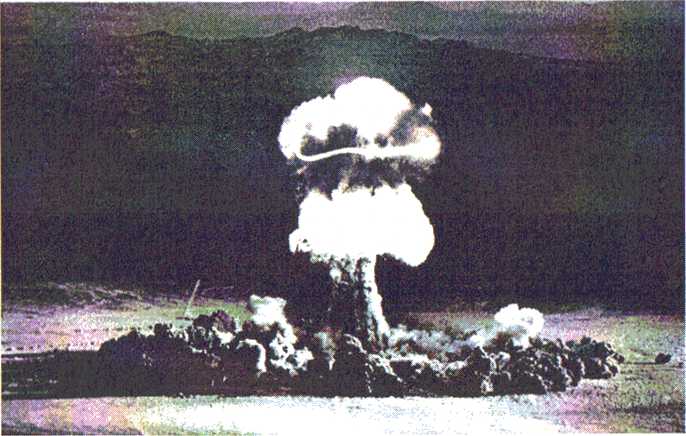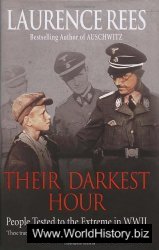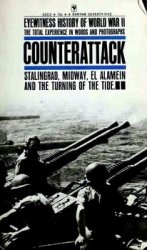Effort was continually apphed toward discovering antidotes to the poison of nuclear weaponry, a poison which had spilled everywhere. The antidotes would necessarily have to be as frightening as the nuclear threat itself, but with none of the hazards involved in purifying, shipping, handling, assembling, storing, and actually using the weapons. Mihtary wanted weapons they could use. If potentials for the development of such weapons existed, they would be found. P*rojects were initiated in every academic institute, the development of new weaponry and weapon systems being the sole effort of the day. In accord with these developments, science was applying itself to the sundry problems of nuclear age espionage. Information itself was a weapon. Acquiring information, clecir photographic information of every Soviet weapons complex was another aim, a research avenue ultimately leading to space technologies. Knowing the potentials of one’s avowed enemies was of prime importance in possible future confrontations. Paths spread out in a thousand different directions, the researchers leaving nothing to chance.
Now there were more stringent demands placed on military laboratories and technology-related industry. One could not simply investigate the endless inventions and hardware of the creative working class experimenters, whose work was once distorted ever so slightly to produce “safe” weapons. In a world where any such weapons potentials might appear again in a future conflict, military was compelled to thoroughly examine and develop far more than the chance invention or hardware having weapons potential. Now, every systems-potential phenomenon had to be examined. Soviet scientists were searching through the same natural world for secrets, secrets to use in war.
One could never leave any stone unturned. One had to be alert, contemporary, almost futuristic. Cold War researchers had to see through every natural display which might be an advantage against the “other side”. Both sides however played this game, constandy imagining what the other had or had not researched. Military used the very best minds which money could buy in order to assess and determine the relative worth of natural anomalies which began appearing during their own research progress. No phenomenon, no special effect, however minor, could be overlooked now. Any one of these strange and vague phenomena might provide the answer to their search for an escape from the present nuclear dilemma. A nuclear escape. Small research teams, having as their goal the thorough examination of academic and even of private experimental findings has been a constant and routine feature of military bureaucracy since this time period.
Surveillance, communications, delivery, and weapons. These four were the chief headings under which military applied its combined strengths to produce the new and hopefully saving technologies designed to end what had been initiated. Filled with the sense that they were indeed planning the future of the world, these researchers excused their consciences and went on with their new occupations. Information was coming in from everywhere. Analysts were everywhere. The first line of research necessarily engaged the nuclear weapons “problem” direcdy. The first problem dealt with the possibility of a first strike from the perceived enemy. What could one expect? After all, the Allies were not under the bombs used in Japan. The most dreadful experience to which they were exposed took them through the streets of the devastated cities, those deemed unclean by their own people. And this phase, the aftermath was horrifying. What measures would be required for a military core group to maintain command perspective during a possible nuclear assault. The problem was a necessary horror to face. Therefore data of the first several tests would necessarily have to be scrutinized.
Whenever explosive releases of nuclear energy are engaged, a host of strange and unforeseen geophysical effects follow. These suites of effects, the consequences of unknown energetic correspondences and modulations, provoked a great deal of intrigue among the many gathered scientific researchers. The several test detonations of both nuclear fission and nuclear fusion devices were followed by a host of unexpected natural phenomena, which trained observers were quick to recognize. Of greatest note were the more direct impacts on both personnel and measuring equipment Nuclear testing produced emcillary phenomena, unexpected occurrences, providing certain new weapons development possibilities. One such phenomenon provoked a line of research which led directly to the development of modem beamray weapons. Comprehending the geophysical nature of nuclear detonations was a gradual realization having several immediate consequences. Nuclear explosions impacted both the magnetic and dielectric fields of the whole planet in ways which suggested new weapons themes.
The first few research tests of relatively low yield nuclear weapons burned out sensitive instrument packages which had been placed at a safe distance from the blast effects. This could not be explained. When heavy shielding failed to block the bum phenomenon, engineers became suspicious that another effect had been stimulated. Furthermore, when local power systems experienced complete “burnout”, an effect which occiured at the very instant in which the nuclear test charge had been detonated, there was no doubt as to the cause. Here was an electrical impulse effect which, in this instance, could not truly be explained. How was the sudden and tremendous volume of current generated by a nuclear blast? Close study of the blast dynamic itself produced no real answer.
There was a sequence to the progress of a nuclear blast, details which unfolded themselves within microseconds. Analysis of the total energetic output of a nuclear fission explosion reveals the continuous spectrum of energetic forms. Every octave in the electromagnetic spectmm is thoroughly covered in such a blast The initial radiation of a nuclear blast, consisting of intense infrared, ultraviolet X-Rays, and Gamma Rays, expands outward to a diameter exceeding one mile. Absorbed by the atmosphere, this deadly radiation shockwave heats the very air to incandescence. This radiation shockwave is lost to the distant surroundings in a few microseconds. With this radiation shock, a powerful neutron flux showers the surrounding area to within one mile from the blast epicenter. As the fireball rises, the incandescent air itself radiates hard infrared, ultraviolet, and X-Rays in a continuous and bright display. This plasma radiant irradiation of the surroundings continues even as the blast ring is escaping into the upper atmosphere. These rays, a wide and combined spectrum of deadly content, thoroughly roast the surroundings. Because of the complete electromagnetic coverage by the fireball. This is the source of that “second” and prolonged heat which nuclear observers have so often reported. The effects had devastating import for military scientists, effects which they had never anticipated.
Once the initial radiative components of the blast were dispersed to the surroundings, the heated ball of plasma impacted the surrounding air. Shaped by temperature differentials and the continuous supply of inrushing air, this plasma ball became a plasma ring. Rotating “fi-om the inside out”, the plasma vortex rose as a deadly conflagration. But the rising plasma ring began manifesting other macroscopic features which could not be simply derived fi-om analysis of the aerodynamic difierentials alone. How was the coherent emergence of an electrical current, to be explained. In such a hot plasma, one whose convolutions are massive and chaotic, there can be no development of microscopic order unless some formative agency induces that order...from the outside. To explain the “mechanism” by which electrons are apparently driven around the rising plasma ring, one must seriously bend the laws of electrodynamics. But many began appreciating the fact that this powerful electrical nature, this manifestation of internal order in chaos, could only be derived from the available formative forces in the environment Indeed, without a consideration of coupling effects more “geophysical” in nature, there was no logical explanation for the electrical organization.
It became obvious that the plasma ring interacted in strange ways with the dielectric field of the earth itself, drawing the vertical field lines into itself. The

Mere presence of the highly energetic plasma represented a dynamic and electro-permeable volume having fluidic attributes. The plasma ring was the focal point of a process in which all of the dielectric field energy surrounding the blast site were forcibly pulled into the fireball. The rising plasma ring effectively became the plate of an immense capacitor, gathering charge and mounting in saturate density. This gave rise to the lightning discharges often seen associated with test shots in an ordinarily blue sky environment. This increased dielectric permeability required special locations for the mtiximum nuclear effect, a fact not widely considered. The notion of nuclear detonations as geoelectric or even as geomagnetic modulators began to occupy the minds of researchers now.
The electrical nature of rising plasma ring, concentrated enough electrical charge to effectively destroy electronics packages with a regularity which became routine for the test engineers. First attempts at shielding equipment fi-om these electrical effects proved impossible. The effect reached such a nuisance level that a deliberated investigation of this feature alone was demanded. Tests measured the ground rising currents responsible for this “burnout” effect, current densities often exceeding several thousand amperes. These currents did not flow in the brief instant of a lightning bolt. They were maintained for a sustained time interval. The nanosecond release of intense fission reactions evoked the upward current flow, a vertical avalanche predicated on the enormous concentration of the terrestrial dielectric field. This new awareness of geophysical coupling effects suddenly became the new research objective of this study group.
The nuclear blast produced a penetrating electrical phenomenon, similar to an effect which had been observed before in connection with sudden electrical discharges. RADAR researchers had long observed the impulse phenomenon which burned out nearby receivers and instrument packages. While those effects were usually directed phenomena, directed through RADAR beams of manageable output, these nuclear related were completely unprecedented. Indeed, they were virtually unmeasurable. Even military command centres which were distant from any blast epicenter would be completely vulnerable to the nuclear communications “burnout" effect. Every piece of electronics equipment would be totally and hopelessly incinerated in the upward current rush. Worse than that, if deeply buried and highly protected command centers managed to somehow escape that initial EMP, the residual effects on both the atmosphere and ionosphere would present a second and equally formidable security breach.
Protecting against Nuclear EMP potenticil was the first goal, if indeed this possibility existed. What kind of shielding could block a sustained lightning discharge? Had anyone in scientific history dealt with sustained discharges of this voltage and volume? Only one. That person was Nikola Tesla, who in 1899 perfected apparatus capable of handling such energetic volumes. Therefore, Tesla patents became a study area of necessity once again. Developing large metallic shields for buried conunand centers required knowledge of Tesla methods.
Consideration of these catastrophic electric effects against military command centers was of first level importance. Mihtary forces, against whom such weapons were used, would be the helpless victims of a complete and prolonged communications burnout. But if they managed to safely endure the blast scenario, the resultant radiowave “blackout” would bring their best communications efforts to an abrupt and disappointing end. Worse than disappointing, the blackout period could spell total annihilation. After a nuclear blast of sufficient magntude and aerial placement, the blackout effect could last for days. This ionospheric blackout phenomenon, revealed that communications channels could be destroyed across an incredible range of electrical frequencies. This range was found to begin in the ELF bands, the operating frequencies of electrical power generators, and indeed surpass the centimeter waves of super-high frequency RADAR.
After the initial blast and fireball sequence, only the optical and radiative channels would remain clear of the “blackout” effect; a fact having defined consequence in the future of military communications technology. The extended blackout, forced upon the victims of such an event, would prolong a critical time period during which no possibility of an organized military action could be coordinated. No information could be exchanged except through rapidly deployed line-of-sight systems. Therefore, much beyond considerations of the blast shock hazard itself, both the burnout and blackout phenomena were themselves tactical weapons in their own right. Here were nuclear weaj> ons effects which had to be breached.
RADAR engineers had observed these effects during the Second World War, when extremely brief highpower pulsed RADAR bursts were beamed toward communications and other electronics equipment. Proper shielding was able to block the penetrating power of those pulsed RADAR bursts. But without special shielding, electronics packages were incinerated as if exposed to explosive fire. These RADAR effects were reminiscent of reports given by Dr. Tesla, when discussing his Radiant Energy technology. The superficial effects proved to have succinct causes which, on deeper evaluation, proved the difference in power between true impulse singularities and wave bursts. The Teshan phenomenon was the result of succinct electroshocks, unidirectional blasts of singular, well spaced impulses. RADAR wave impact was effective only in that initial wave crest The sudden rise in electric potential from zero was the active agent in burning and bursting materials. Each subsequent wave alternation added no more energy to the effect Since only the leading wave crest was the effective energetic portion, the rest was “lost” as heat Thus only “the lead edge” of each long burst was useful in producing EMP effects.
Dr. Tesla taught that effective conservation of the effect relied on conservation of the impulse energy. The impulse singularity was only part of his process however, the separation of charge carriers &om aetheric components being the critical factor. For Tesla, the “shock excitation” provided a means for heating the currents to sufficient chaotic levels for their separation in magnetic disrupters. Nevertheless, succinct electric impulses were the only means by which these effects could be most powerfully initiated. While RADAR burst or “EMP” effects were powerful. Nuclear EMP were overwhelming. Nuclear EMP burned electrically conductive systems. Grounded systems were especially vulnerable, but aerial systems packages could be destroyed as well. Dielectric field energy simply focussed into any conductive medium, stimulated sudden high voltage surges, and quickly heated metals. Much of the metal vaporizing power of a nuclear blast was contained in the NUCLEAR EMP phenomenon. If the metal materials were articulate and frail, such as those in any radio apparatus, that system would be burned to a cinder. It was enough for engineers to know that Nuclear EMP rendered radio systems useless. The miliary beheved it had in its sights a new means for destroying all enemy communications systems.




 World History
World History









